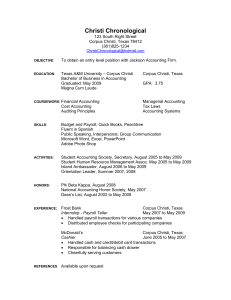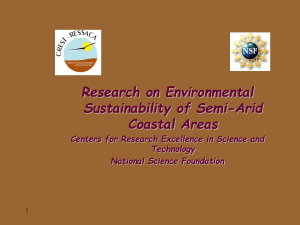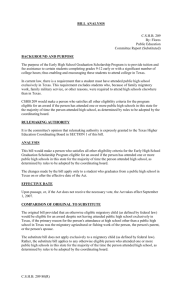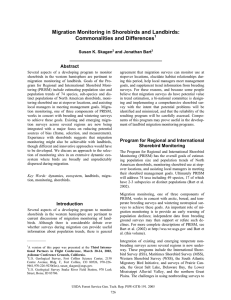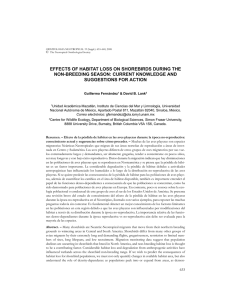seasonal abundance and habitat use of shorebirds on an oso bay
advertisement
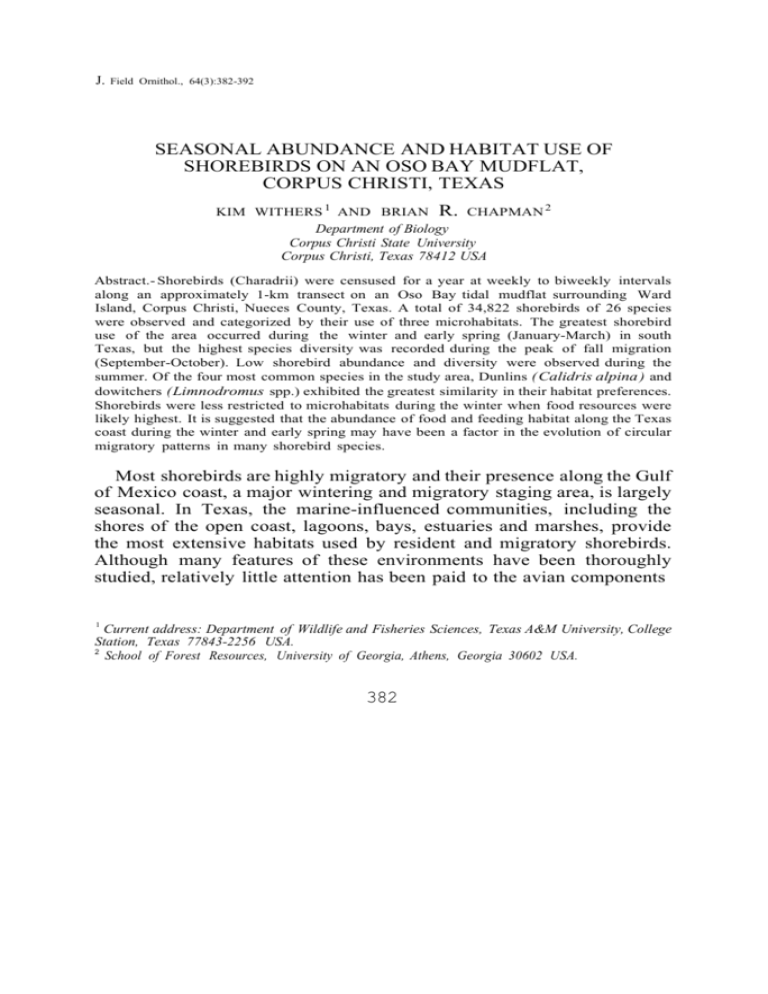
J. Field Ornithol., 64(3):382-392 SEASONAL ABUNDANCE AND HABITAT USE OF SHOREBIRDS ON AN OSO BAY MUDFLAT, CORPUS CHRISTI, TEXAS KIM WITHERS 1 AND BRIAN R. CHAPMAN 2 Department of Biology Corpus Christi State University Corpus Christi, Texas 78412 USA Abstract.- Shorebirds (Charadrii) were censused for a year at weekly to biweekly intervals along an approximately 1-km transect on an Oso Bay tidal mudflat surrounding Ward Island, Corpus Christi, Nueces County, Texas. A total of 34,822 shorebirds of 26 species were observed and categorized by their use of three microhabitats. The greatest shorebird use of the area occurred during the winter and early spring (January-March) in south Texas, but the highest species diversity was recorded during the peak of fall migration (September-October). Low shorebird abundance and diversity were observed during the summer. Of the four most common species in the study area, Dunlins ( Calidris alpina ) and dowitchers ( Limnodromus spp.) exhibited the greatest similarity in their habitat preferences. Shorebirds were less restricted to microhabitats during the winter when food resources were likely highest. It is suggested that the abundance of food and feeding habitat along the Texas coast during the winter and early spring may have been a factor in the evolution of circular migratory patterns in many shorebird species. Most shorebirds are highly migratory and their presence along the Gulf of Mexico coast, a major wintering and migratory staging area, is largely seasonal. In Texas, the marine-influenced communities, including the shores of the open coast, lagoons, bays, estuaries and marshes, provide the most extensive habitats used by resident and migratory shorebirds. Although many features of these environments have been thoroughly studied, relatively little attention has been paid to the avian components 1 Current address: Department of Wildlife and Fisheries Sciences, Texas A&M University, College Station, Texas 77843-2256 USA. 2 School of Forest Resources, University of Georgia, Athens, Georgia 30602 USA. 382 Vol. 64, No. 3 Shorebird Abundance and Habitat Use [391 of these marine systems. Furthermore, most of the shorebird research on the Texas coast has emphasized the sandy beaches bordering the Gulf of Mexico (Chapman 1981, 1984) despite the fact that this region provides a smaller proportion of suitable habitat for shorebirds in Texas than other marine environments (Diener 1975). Like many other coastal areas, the Texas coastline is under constant threat of more extensive development. The rapid destruction of wetlands in wintering and migratory staging areas makes shorebirds prime candidates for population declines (Howe et al. 1989). Conservation and management of the remaining coastal wetlands in Texas will require an understanding of the variation in the numbers and kinds of organisms supported by each habitat type. Such understanding must develop from descriptive studies of the relative abundance of each species throughout the year and the way in which each species uses the wetlands that are available. This is particularly important because many shorebird species or populations follow a circular migratory route, taking a more central route northwards than southwards (Harrington and Morrison 1979). Numerous authors (e.g., Myers 1983, Myers et al. 1987, Senner and Howe 1984, Wunderle et al. 1989) have emphasized the importance of having accurate baseline information on shorebird distribution and abundance along all portions of the migratory routes including the breeding and wintering grounds. The purpose of this study was to quantify the seasonal abundance and habitat utilization of shorebirds on an intertidal mudflat of a bay system in southern Texas. .

